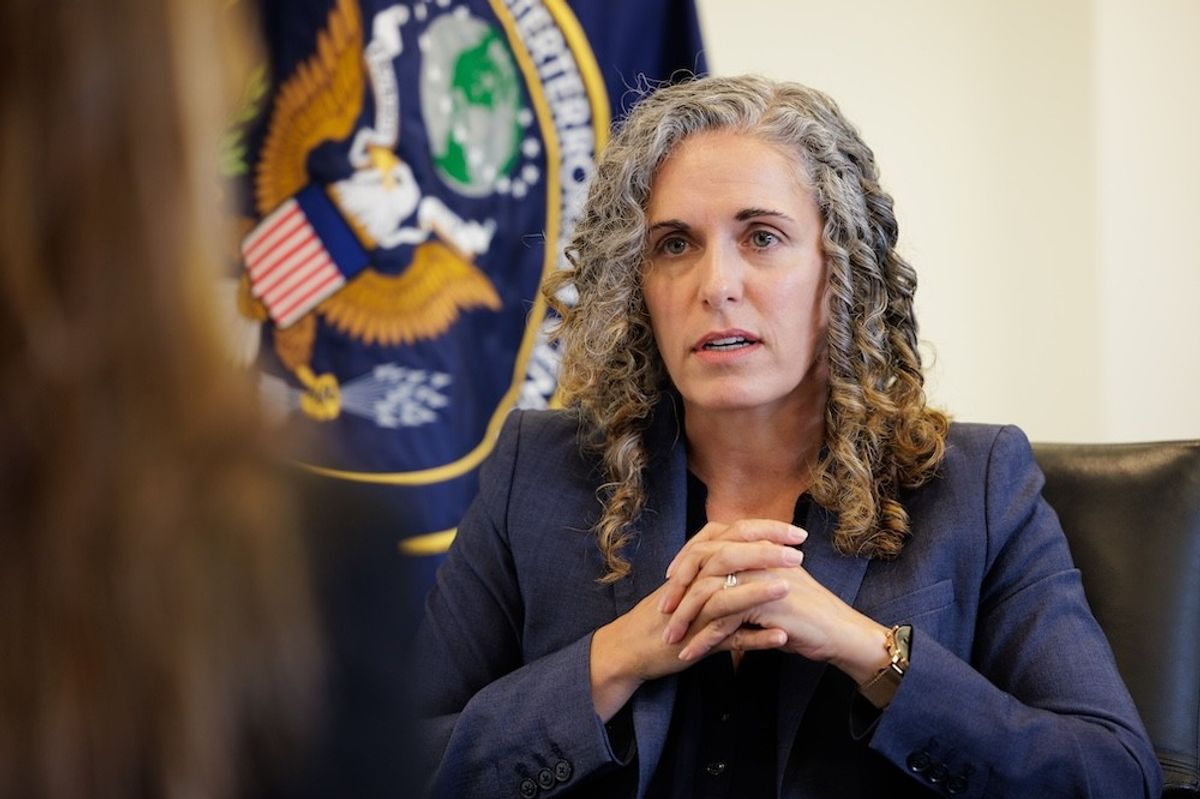Former Ambassador to Sri Lanka, Teresita Schaffer, discussed with The Cipher Brief the continued importance of a close U.S.-India relationship. Schaffer explained India’s tenuous security dynamic with China and Pakistan, and emphasized the importance of continuing active U.S.-Indian consultation and cooperation on East Asian security issues as India shapes its role on the global scene.
The Cipher Brief: Historically, how would you characterize the U.S.-India relationship? How have you seen it change since you were first posted there?
Teresita Schaffer: During the Cold War, the U.S.-India relationship was thin, and more often than not, contentious. Jawaharlal Nehru’s concept of nonalignment was badly received in Washington in the 1950s, and the successful U.S. recruitment of Pakistan to the Cold War alliance system went over like a lead balloon in Delhi. Largely as a result, the Soviet Union became India’s most important and reliable international relationship. Indira Gandhi took the Non-Aligned Movement in a more stridently anti-Western direction.
After the Cold War ended, the relationship was transformed. By 2000, the United States had become India’s most important great power relationship. The transformation reflected primarily three things.
First, the end of the Cold War had eliminated the reason for the U.S. to look at the world in terms of two major hostile blocs. Second, India’s economy, which had underperformed at least until 1980, began to surge ahead, with growth reaching over nine percent per year in the period just before the global recession. This made Indians look on their economy as a source of geopolitical strength – and on the United States as the key partner that could help India take advantage of its growing economy. It also made Russia, with its struggling economy now considerably smaller than India’s, a much less useful international partner. The third cause of the big transformation was the Indian diaspora in the United States, the most prosperous ethnic group as measured in the U.S. census, and one that linked the important electronic industries in both countries.
The biggest illustration of the change is the agreement on civil nuclear cooperation that the U.S. and India signed in 2008. This agreement changed the way the United States had interpreted its nonproliferation policy for decades – India is not a signatory to the Non-proliferation Treaty, and can’t become one without giving up its nuclear arsenal, which it will not do. It also required changes in U.S. law. The agreement has fallen short of the hopes for commercial engagement, but it is a powerful symbol of both countries’ willingness to resolve a major problem between them.
I was first posted in India in 1977, and was responsible for South Asia policy as Deputy Assistant Secretary of State from 1989-1992. By that time it was clear that things were changing, but we did not imagine that the transformation would go as far or as fast as it did.
TCB: How has the U.S.’s relationship with Pakistan affected the relationship between the U.S. and India?
TS: India has always been uncomfortable with U.S.-Pakistan ties. This was especially the case in the 1950s and again during the decade of intense U.S.-Pakistan engagement after the Soviet invasion in 1979. The 1990 U.S. cutoff of aid to Pakistan over its nuclear program coincided with India’s economic turnaround. By that time, India’s strategic thinkers came to regard China as their main strategic challenge and had begun to look on the United States with some important strategic interests in common with India.
Nonetheless, the Pakistan factor is still there. India regards Pakistan as a source of terrorism that has done it great harm. New Delhi tends to watch U.S. actions carefully for signs that the old magic between Islamabad and Washington is playing again.
One of the U.S. actions that helped cement relations with India came in 1998, after Pakistan had sent armed troops into Kargil, a remote area in the Himalayas, in the Indian-controlled part of Jammu and Kashmir, triggering what is often called the fourth India-Pakistan war. President Clinton telephoned Indian Prime Minister Vajpayee to discuss how he planned to handle the crisis. In a dramatic meeting in Washington on July 4, Clinton persuaded the Pakistani prime minister to withdraw his troops from the Indian side.
The U.S. is determined to leave behind a reasonably peaceful Afghanistan, and despite great tensions in its relations with Pakistan, believes that Pakistani cooperation is necessary to that enterprise. Washington has protected its relationship with New Delhi even during this Afghanistan end-game, but there are inevitably differences between U.S. and Indian perceptions, so the Pakistan factor will continue to complicate relations with India.
TCB: Where does China fit into the relationship between the U.S. and India?
TS: India lost one war against China in 1962 (and the U.S. provided military assistance at that time – amazingly quickly, considering that this war coincided roughly with the Cuban Missile crisis). Today, China is the most powerful security challenge for both the United States and India and a huge economic partner to both. Neither the U.S. nor India wants to stir up hostility with China, but both have a strong interest in developing a robust network of friendly countries in South and Southeast Asia, so that no one country becomes the dominant power there.
The big change since the end of the Cold War is that both Washington and New Delhi recognize these important common interests. Asian security has become one of the most successful areas for high level consultations between India and the United States. This isn’t an “alliance” relationship of the sort the U.S. has in Europe or with Japan – that would be alien to India’s thinking about its role in the world, and to the “nonalignment” and “strategic autonomy” ideals that still have a powerful influence in Indian policy. But it provides a strong foundation for the two countries to develop independent but compatible policies in a vital region.
TCB: What are the critical issues for the United States and India going forward?
TS: The old issues will remain important. I would especially single out the importance of continuing active U.S.-Indian consultation and cooperation on East Asian security issues. India is a growing player in that broad region and will help shape an area that is critical to the United States.
Two other issues will be critical for the future of U.S.-India relations. The first is India’s economy. The reality is that Washington takes countries more seriously when there is a strong trade and investment dimension to their ties. So continued robust growth will be a key foundation for this relationship, as will a willingness on both sides to address the commercial issues that arise from time to time.
The second, in my view, is how India shapes its role on the global scene. Until now, its determination to pursue a course that is not influenced by others’ policies – the preferred phrase in India is “strategic autonomy” – has led it to stand aloof from many issues on the international scene and has made for quite difficult relations with the United States in multilateral settings, ranging from trade to climate change to the United Nations. Its overall preference for “strategic autonomy” is unlikely to disappear, and in some cases, notably trade and climate change, its economic interests lead it in a different direction from the U.S. However, it will be important for Washington and New Delhi to find more effective ways of working together on these difficult issues, because at the end of the day, both need to work toward a more effective global understanding on them.
The India-U.S. connection is a high maintenance relationship. It will continue to need a steady does of high level attention and care.













